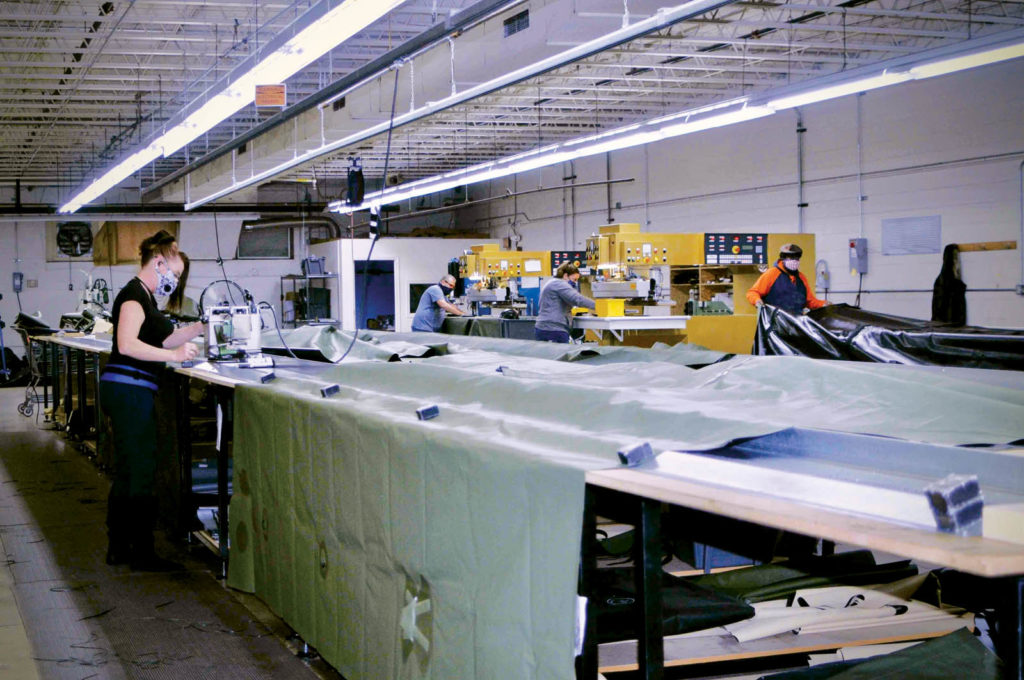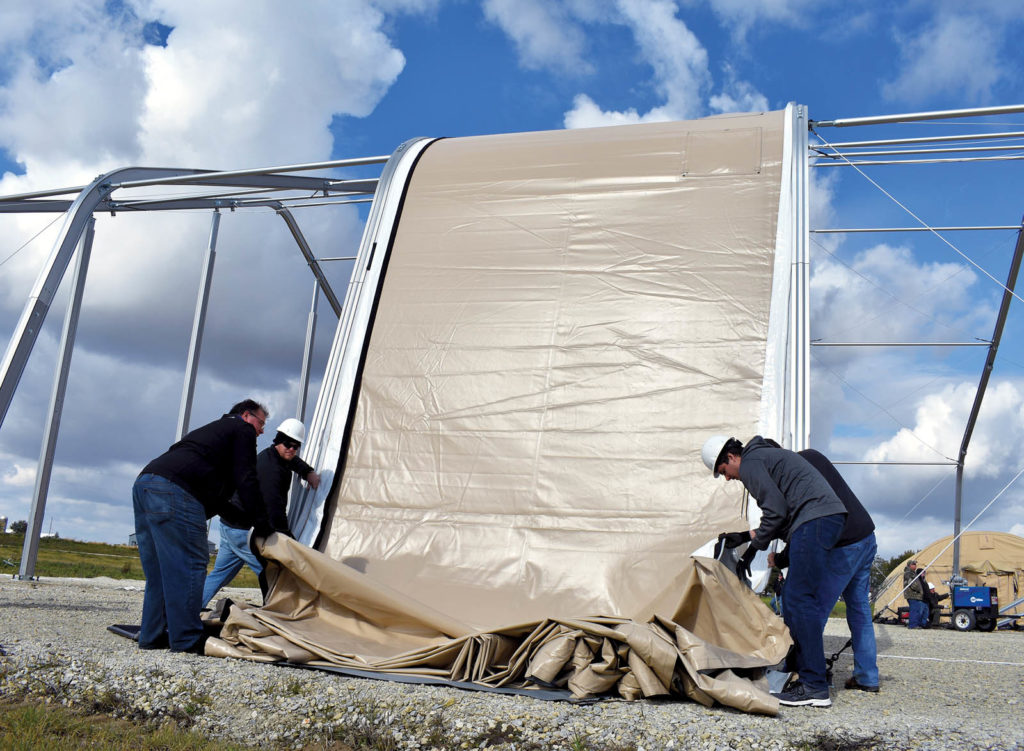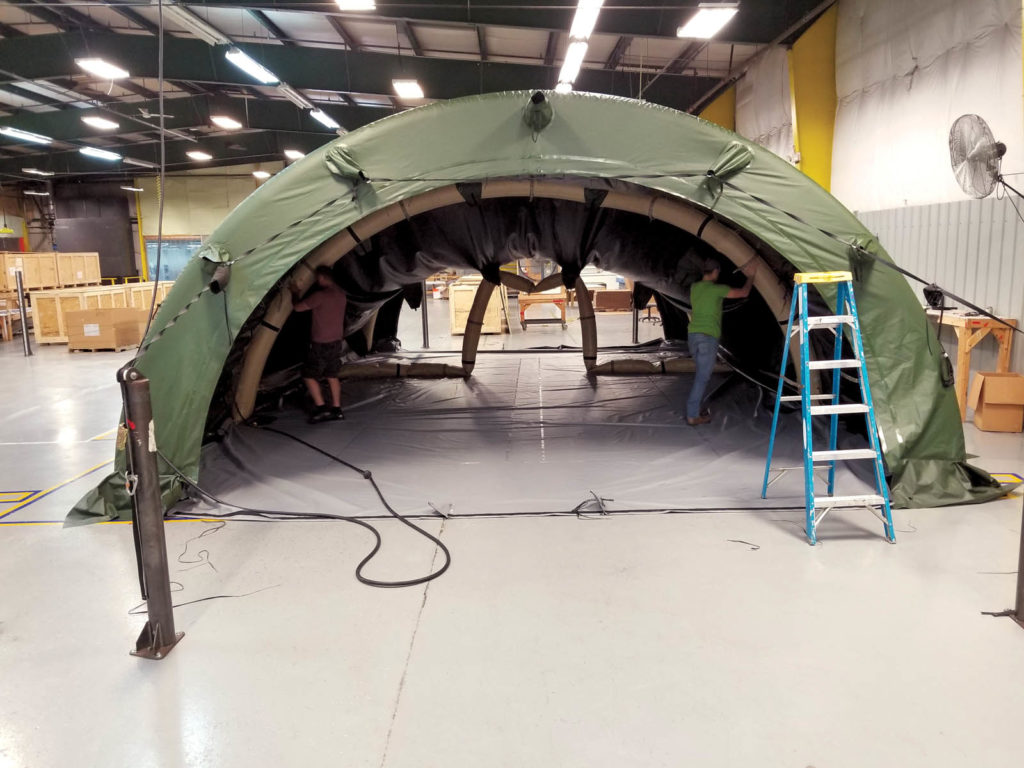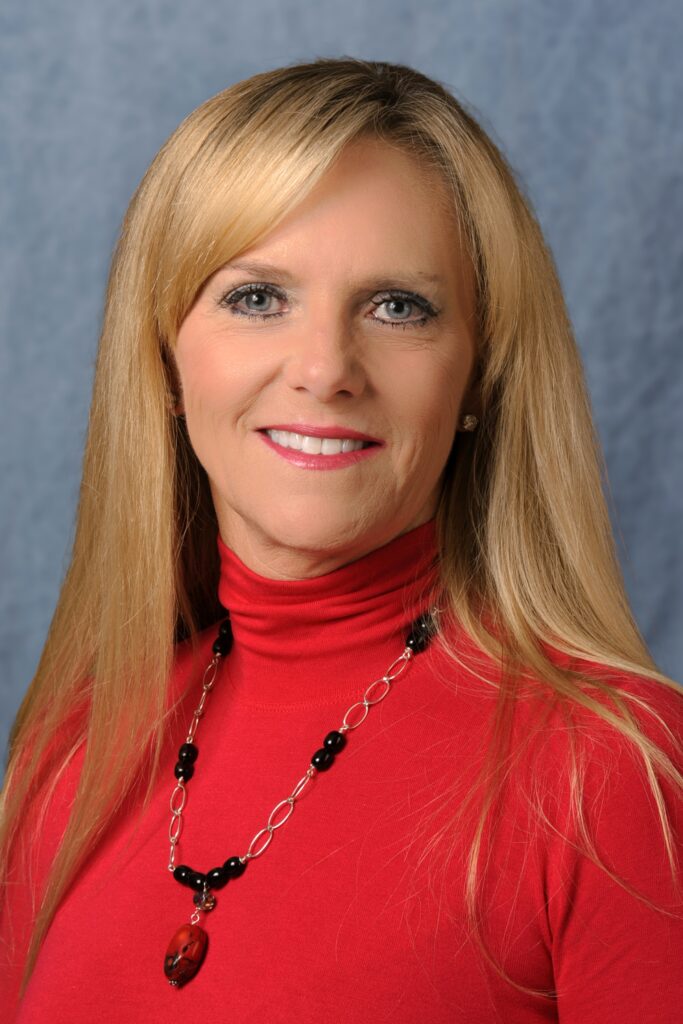There’s always challenges to running a successful business—keeping a step ahead of the competition, anticipating the changing needs of the customer, paying attention to the financials.
But the past two years have posed difficulties that, being largely unprecedented, were nearly impossible to anticipate. Specifically, in the industry of manufacturing military and disaster shelters, owners were dealing with regular business issues along with severe supply chain constraints, staffing shortages and other problems unique to the pandemic and related problems.
“It certainly has not been an environment in which to be complacent or lazy,” says James Maurer, chief operating officer at Dynovis Inc., which designs, manufactures and fields frame and air supported shelters for military and relief agencies from its headquarters in Fairfield, Va.
While Maurer and the three other executives in the industry interviewed for this article saw demand for at least some products increase during the pandemic, sometimes anticipated and sometimes not, everything else they found on their plates has made for plenty of long days.
“We’ve been doing this for 22 years and I’ve never seen anything like this,” he says. “It’s what we talk about and deal with every day.”
Demand “seems to be okay” in the shelter market, says Maurer. “A lot of the things we’re doing in terms of features and technology and designs are allowing us to stay ahead in the marketplace. While the military side of the market has a healthy number of companies in the business, the event and the consumer markets offer more competition because you’ve got foreign products, even though the demand is not the highest it’s been right now.”
Maurer says the military customer continues to look for innovations and advanced features, along with improvements in weight and rapid deployment capabilities: “One of the things we’re seeing is that the product has to be a durable shelter that is pretty intuitive and simple to use, but also have some advanced features, such as insulation, and energy-efficient capabilities like solar shading—just the ability to reduce power consumption for heating and cooling.”
While it might seem that the end of the U.S. involvement in Afghanistan would have reduced the demand for military shelters, “shelter demand is always hard to predict,” explains Maurer. “Some people try to tie it to military operation tempo, but it’s also tied to turnover and troop movements—when people return they have to reequip. It also depends on budgets, and who is getting what when.”

New customers, new questions
One of the big changes since the pandemic started is that “we’ve seen a lot of people from outside the industry coming in and asking a whole new set of questions,” explains Jeff Grieshop, president of Celina Tent Inc., which manufactures engineered fabric products and military shelters, and distributes event equipment in Celina, Ohio.
“The view of the products we’ve been selling for years into lots of markets—industrial, military, event, hospitality, what have you—has always had a certain set of parameters or questions you’d discuss. But now it’s been a lot of new customers, such as schools, asking questions about things such as social distancing.”
Not that Grieshop is complaining. “When the pandemic started, we thought, ‘Okay, let’s tighten up and get ready for the rough patch,’” he says. “But the pandemic actually had the opposite impact; we got very busy providing for social distancing, such as outdoor seating, tables and chairs.”
Celina, too, has seen that business environment result in less attention to innovation.
“In the last year, it hasn’t been about technology or new features as much as it has been just about availability,” says Grieshop. “With demand high and supply low, there hasn’t been a real push from the end user for technology. At the same time, we’re still trying to raise the bar internally, developing lots of different shelters for the military space, making them more energy efficient, lightweight and durable.

“An interesting journey”
Although it wasn’t easy, the past year was a good one as well for Outdoor Venture Corp. (OVC), which manufactures soft and hard wall shelter systems, including mil spec and other tent-related floors, liners, and base camp solutions in Stearns, Ky. “It was an interesting journey, but we were able to keep a good part of our forward momentum, as our products were in need by the military and first responders,” says OVC chief executive officer J.C. Egnew, who will celebrate 50 years with the company next September. “Still, gearing up for additional business has become a lot more difficult.”
OVC has presided over some advances in the tent cover components it makes, such as air supported structures that have been revised and improved to be more customer-friendly as a result of experiences in the Iraq and Afghanistan wars, according to Egnew.
“What’s new is a lot of demand for Tent Extendable Modular Personnel [TEMPER] tents, which have several different types of modules that are used for building and first aid and hospital units,” says Egnew. “Also, the army’s lowest-cost billeting shelter, about 10 years old, has been in high demand.”
In terms of fabric, there’s no real changes in the basic mil spec fabric as OVC sees it in normal tents, according to Egnew, but he says the company is working with an Israeli partner on multi-spectral camouflage fabric “whose product is the new generation of Ultra Lightweight Camouflage Net System [ULCANS] for signature management. It’s a very strong business for us right now.”

Spreading wings
When Mark Riffle bought Camel Expeditionary in 2014, the Pioneer, Tenn., the company was primarily a mil performance tent manufacturer. Riffle, who serves as president and chief operating officer, said his goal for the firm (now 101 years old) “was to spread our wings and develop a little more stable business platform by slowly introducing more commercial products.”
“The COVID situation really amped us up and we were able to really build commercial business with a lot of good sales, primarily for mobile hospitals,” he says. “We were developing 100-bed mobile hospitals using our connectivity technology with our tent and hub systems, creating treatment wards for either COVID or for things displaced by COVID.”
Riffle says Camel can now provide a full range of tents for first responders, search and rescue operations, all the way up to a basic hospital.
“The supply chain got pretty darn weak, but we had planned ahead to a certain extent and actually had inventory on hand when the pandemic hit,” explains Riffle. “We were able to shift from a Department of Defense workload to a mobile hospital workload. We were in kind of a perfect storm of events, allowing us to grow the commercial side of our business, which more than doubled.”
As much as tent materials evolve, says Riffle, more attention is being paid to rapid deployment characteristics. “The products need to go up and come down faster with plug and play mentality, lighting already installed into liner system and more durability,” he says. “Durability in wind-whipped areas of the world is important too. Being able to put up a tent regulate its temperature with the lowest amount of energy required, is a big deal as well.”
“There are a lot of things that require our attention,” says Maurer. “You just have to be on the ball.”
Jeff Moravec is a freelance writer based in Brooklyn Park, Minn.
SIDEBAR: Supply problems and staffing issues
In the current business environment, some challenges are unique to the military disaster/relief shelter industry. But many are the same issues facing all kinds of businesses across the globe.
“In the past, you’d have people lining up out the door for a job,” says James Maurer, chief operating officer at Dynovis Inc. in Fairfield, Va. “You didn’t have to worry about that piece of it. But now it’s a real factor.”
According to Maurer, Dynovis has dealt with the issue by raising some rates, increasing the flexibility of employee schedules and focusing efforts to retain trained staff.
On top of that, says Maurer, the company is dealing with the same transportation problems that have been front-page news for the past several months. “We’re constantly looking at whether we can get stuff in and out, and whether we can even get materials. You just have to roll with the punches.
“Now the bubble is the supply chain,” says Jeff Grieshop, president of Celina Tent Inc. in Celina, Ohio. “Anybody who was buying from China now can’t get product because of the containers. We have orders we can’t get out because of lack of materials.
“Prior to 2019, you just took some things for granted, such as getting skids or packaging materials,” says Grieshop, “but not anymore.”
With the difficulties fielding a complete workforce, Outdoor Venture Corporation (Stearns, Ky.) Chief Executive Officer J.C. Egnew worries about the possibility that defense contractors might be required by presidential mandate to have all employees vaccinated or offer weekly testing. “That would really cripple the defense industrial base, especially small business,” he says. “It would put a lot of people on the sidelines.”







Leave A Comment